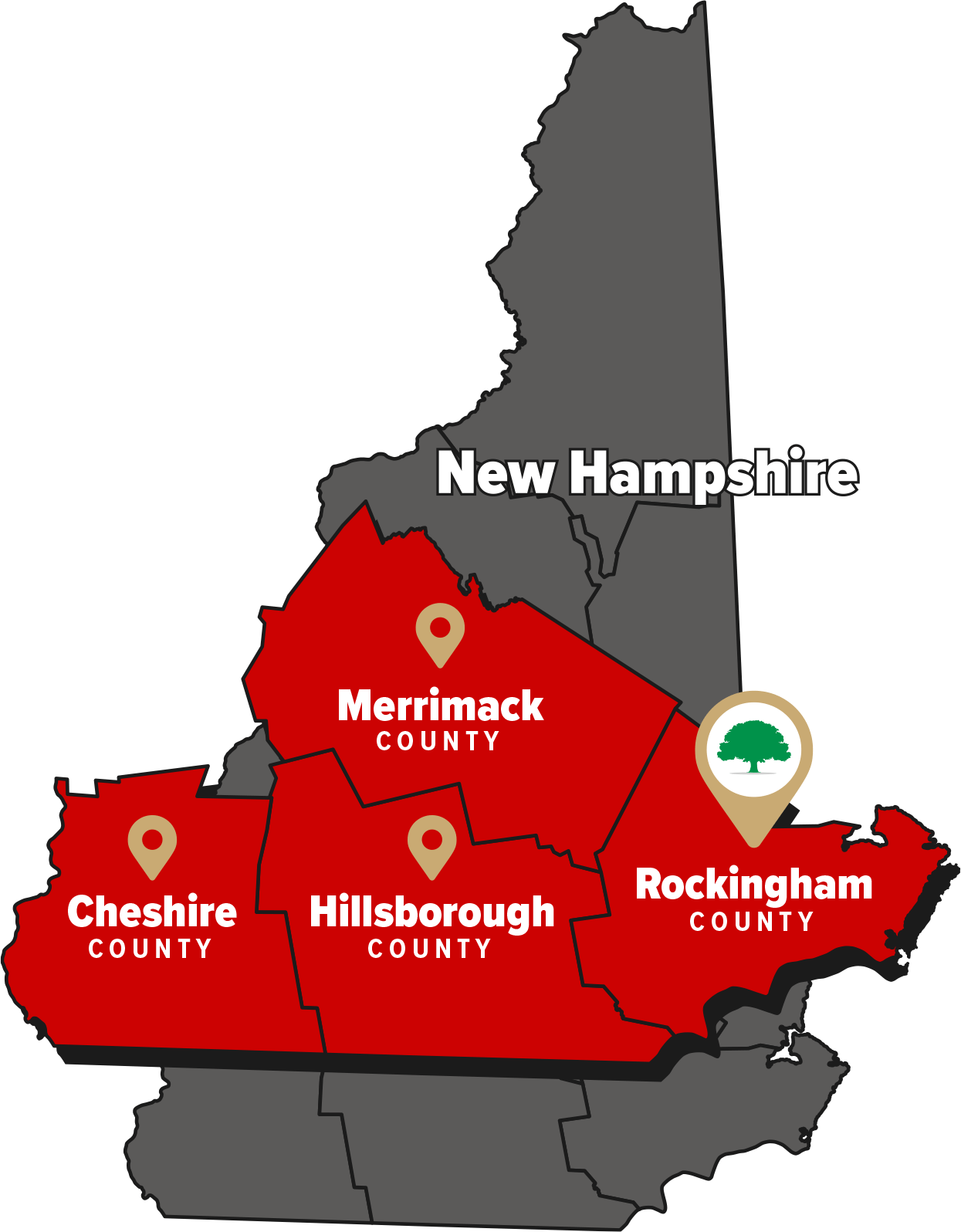
Lawn Care in New Hampshire
Achieving a beautiful lawn is an ongoing process that can be difficult. There are numerous DIY products on the market that claim to be what your lawn needs, but they don’t tell you why or what your lawn’s issues are. Alliance Landscaping is a locally owned lawn care company that has been assessing and caring for grass like yours for over 20 years. We know what the harsh New Hampshire climate can do to your grass and how to bring your turf from dull and dry to lush and healthy in just one season.
Customized Packages to Fit Your Needs
We recognize that each lawn is unique. Your turf’s requirements depend on your soil, the type of grass, and numerous other factors. When you partner with Alliance Landscaping, our trained and licensed lawn care technicians will assess your grass and customize our organic and EPA-approved lawn care treatments to allow your turf to reach its full potential. With our next-day service, free inspections, and free quotes, you don’t have to wait to get started on your lawn’s transformation.
Trust Our Innovative 7-Step Lawn Care Program
Proper lawn nourishment isn't just about dumping fertilizer on your lawn at different times during the growing season. At Alliance Landscaping we have developed a lawn care program that not only focuses on when to feed your lawn for optimal results, but also encompasses the specific nutrition your grass needs for each part of the season, weed control, and soil maintenance.
As part of our customizable 7-step lawn care service you will receive:
- An application of fertilizer, pre-emergent crabgrass control, and broadleaf weed control in mid to late spring. We wait until your lawn is ready to provide the nutrients it needs to come back to life after being dormant throughout the winter months. The weed control applications clear out unwanted ground cover, giving your grass room to grow.
- Our second application in late spring contains our custom slow-release fertilizer and another pre-emergent crabgrass treatment. A crabgrass post-emergent and targeted broadleaf weed control will further eliminate unwanted plants.
- To support your turf through harsh summer heat and drought conditions our third lawn treatment contains a tailored mix of nutrients in a slow-release fertilizer designed to help your turf thrive in these conditions.
- Late summer brings the final slow-release fertilizer application to support sustained growth.
- In our fall treatment, we use a custom fertilizer that has been developed to promote root growth to ready your turf for winter.
- The weather and your lawn’s needs deplete your soil during the growing season. With our fall treatment, we also apply a specially formulated treatment including lime to optimize the pH and magnesium levels of your soil to ensure vibrant and healthy grass next season. Our lawn care specialists will advise if a second treatment in the spring would benefit your turf.
- Based on our experience over the last 20+ years, we include grub control treatments in our first summer treatment. This gets rid of these destructive beetle larvae before they can destroy your lawn by devouring your turf’s root system.
- Targeted broadleaf weed control is part of all summer and fall treatment applications, as needed to keep your lawn looking lush and uniform.
Experienced Technicians Delivering Results
As a premier New Hampshire lawn care company, we realize that education and training of our technicians is an important part of providing excellent service. Our friendly lawn care experts are willing and able to answer any questions you may have. They are state-licensed and undergo continuous training to learn new methods and products to deliver the best lawn care possible. We strive to keep the customer in mind as we provide industry-leading services to achieve the lawn of their dreams.
Whether your lawn is in need of a total transformation or just a little extra TLC, Alliance Landscaping has you covered. Contact us today to get started with a free quote.
Areas We Service in New Hampshire
As a locally-owned and operated lawn care company, we’ve been serving this area for over 20 years. We have experience in diagnosing and fixing common and uncommon lawn care problems that are unique to our climate. As part of our commitment to the communities that we serve, we donate to many local organizations as a way to give back.








